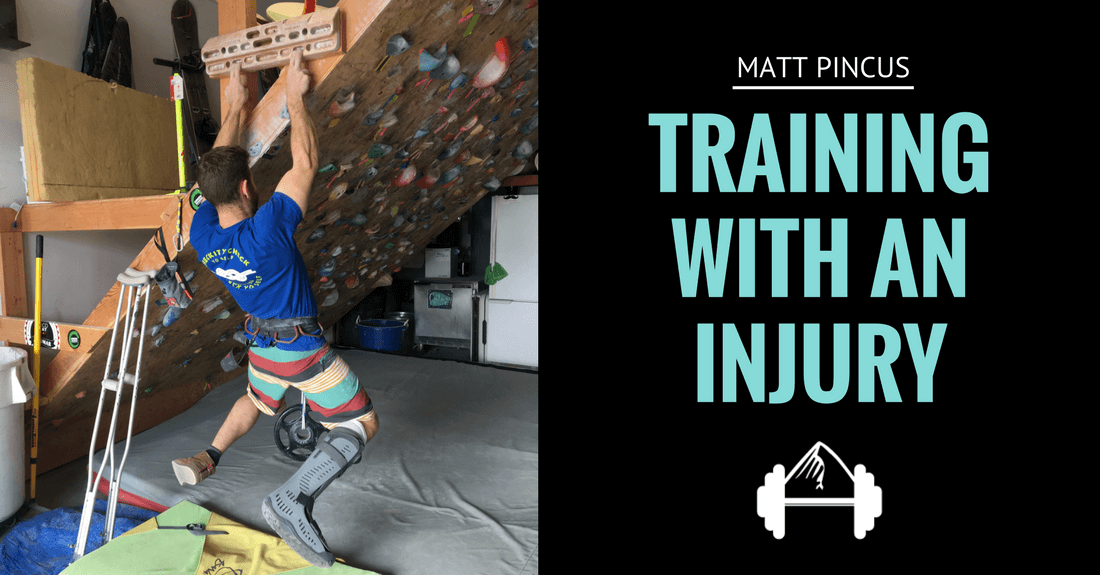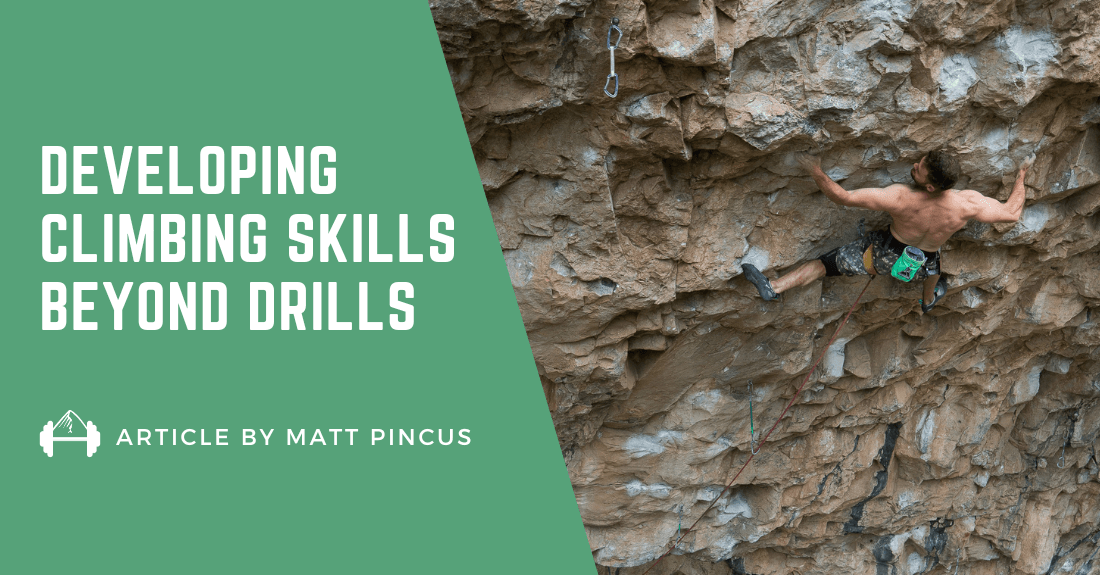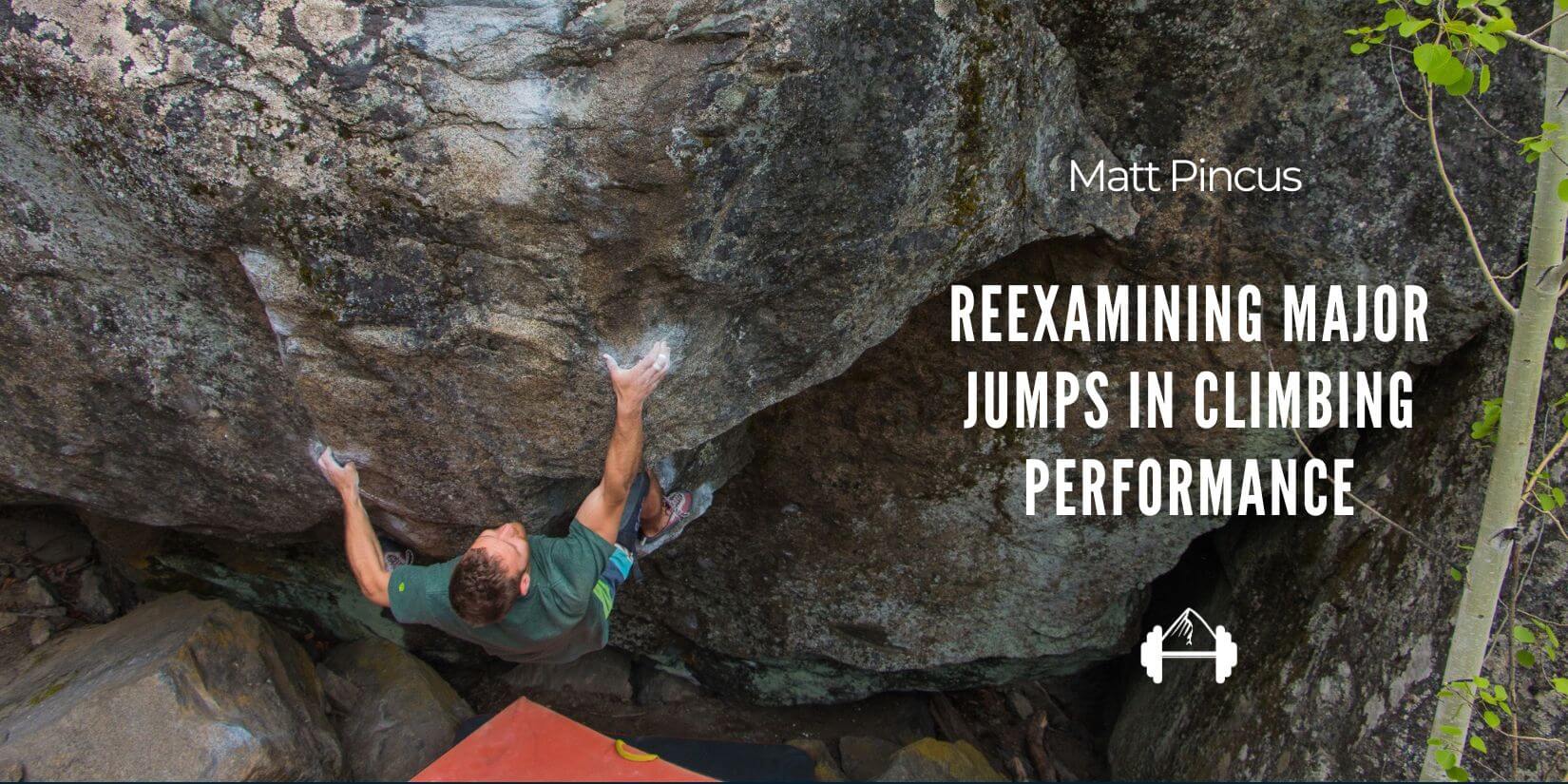In the last two years, I’ve broken my leg and had to take 3-months off climbing due to a finger injury.
Currently, I feel like the thing I’m best at is getting back into good climbing form after injuries.
However, my recent injuries and training to get back to my top form have taught me there’s one major rule when it comes to returning to climbing after an injury:
NO MATTER WHAT YOUR INJURY IS, THERE’S PROBABLY SOMETHING YOU CAN STILL DO TO IMPROVE YOUR CLIMBING WITHOUT FURTHER AGGRAVATING YOUR INJURY.
Now, as you probably guessed it’s time for the disclaimer… I am not a medical professional and everything I am writing here is based on my own personal experience and expertise in training for climbing. I would never suggest anyone contradict medical advice and continue training with an injury based on what they read here. If you are hurt, seek EXPERT medical advice and follow it. Your number one goal in climbing and training for climbing should be to stay healthy.
Training With an Injury
Climbing is a complex sport. A lot more goes into a high-level performance than just your ability to pull hard. Even putting the mental side of things completely aside, climbing your best requires you to have strong fingers, a strong core, lots of power, impeccable technique, adequate flexibility and mobility, good strength endurance, and if you’re route climbing, the ability to hang on forever.
With all these elements in play, chances are there is something you can still work on that will not interfere with the healing process. The key to training with an injury is figuring out what this thing is.
Additionally, the goal should not be to lose as little ground as possible but to try and target whatever weaknesses your injury allows you to work on. This way you’re not just treading water and can return to climbing as a more well-rounded athlete.

The author trying hard on the hangboard despite his broken leg. Just because you’re hurt doesn’t mean you can’t try hard!
The author trying hard on the hangboard despite his broken leg. Just because you’re hurt doesn’t mean you can’t try hard!
Obviously, every injury is different. As a result, there are no hard and fast rules about exactly how you should train with any given injury. The challenge is to figure out the balance between what you personally should be working on and what your injury allows.
That being said, here are some general considerations and tips that have helped me get back to climbing my best as quickly as possible after being injured.
Something is Better than Nothing
If you can’t climb, fingerboard.
If you can’t fingerboard, train strength and core.
When all else fails, work on mobility and flexibility.
When it comes to training, we all want to be on the ideal training program. But let’s face it: being injured isn’t ideal, so we might as well abandon that idea. Doing something is better than nothing. Staying as active as possible during your recovery is good for morale and will help shorten how long it takes you to get back to climbing well once you are healthy. So, figure out what you can do and even if it doesn’t feel like much, know that it’s going to help in the long run.
What I Did During A Finger Injury
To give you an example of how this worked for me, when my finger was in a splint, at first, I couldn’t even hang on a pull-up bar and felt like there wasn’t anything productive I could do. However, I did a lot of yoga and my flexibility and mobility improved. Hip mobility and tight hamstrings have always been weaknesses for me. This time when I had to be super careful of not loading my finger at all was the perfect time to work on them. In doing 30-60 mins of yoga four times a week, I put extra emphasis on hip opening poses like pidgeon with forward fold and hamstring stretches like downward dog and pyramid.
The gains I made in my hip mobility and hamstring flexibility motivated me to work on my core strength. It’s not that I had a particularly weak core, but it was what my injury allowed me to train, and I knew it would help in the long run. Mostly I did mat exercises like hardstyle planks, hardstyle situps, and seated leg raises. Then, once I could hold a weight I added in Turkish get-ups and Russian twists.
Finally, once I was cleared to hang on a bar (my finger was still splinted) I did a ton of training on the gymnastic rings. This meant I could progress the difficulty of my core workouts by including exercises like ab rollouts, body saws, and suspension crunches. Additionally, it let me work on some more climbing-specific upper body strength. I did a lot of flys, archer pushups, and muscle ups. These sessions weren’t the most fun, but I’m confident that it made re-entry into climbing easier. I emerged from my three months without doing a single climbing move more flexible and with a stronger core than I’d ever had before.

The author doing archer pushups on the gymnastic rings. This was less than a week after his surgery to repair his broken leg.
Training Finger Strength Is A Safe Bet
Let’s face it: hangboarding kind of sucks. Especially when you compare it to how fun climbing is. Unfortunately, it’s also some of the most beneficial training you can do.
If you can hang from a fingerboard without aggravating your injury, you’re in a good place. If you have a lower-body injury like my broken leg (or a knee injury, sprained ankle, etc…), this is the perfect time to train finger strength. After all, you’ve broken your leg, not your fingers.

Friend not foe. [photo by Matt Pincus | @mpincus87]
Additionally, it’s can even possible to fingerboard with a finger injury. You just need to treat the hangboard as a rehabilitation tool rather than a strength training device. The ins and outs of how to do this are beyond the scope of this article, but PT Esther wrote an article and did a TrainingBeta Podcast episode all about it. Please read the article and listen to the podcast episode carefully before starting to fingerboard as rehab.
Fingerboarding Considerations
Now, before you rush off and start an intensive fingerboard cycle…
Just because you’re injured and have an excess of pent up energy from not climbing doesn’t mean it’s time to go crazy and start fingerboarding seven days a week. Be smart and don’t overdo it. Make sure you stay disciplined and give yourself enough time to recover. For me, during my leg injury, this meant I did five fingerboard sessions over a two week period. In other words, one week of 3 sessions followed by a week of two sessions.
Just remember, your fingerboard sessions are strength workouts, not a fun bouldering session. Don’t just do a bunch of random hangs. Pick a protocol and commit to following it. Which protocol you pick is less important than sticking with it. This article I wrote comparing hangboard protocols will give you some more information to choose which protocol best suits your needs.
Ultimately, if you commit to a protocol, stay disciplined, and follow through, it’s entirely possible you’ll return to climbing with stronger fingers than you had before your injury.
You Can’t Have Too Much Core Strength
There really is no conceivable moment in climbing that you’re going to think to yourself, “Damn, my core is just too strong right now.”
In fact, the only way you can really overdo core training is if you go so hard that it takes you days and days to recover from it. Even then, if you go overboard during a core session, it probably isn’t going to injure you. You’re just going to be really sore the next time you try and climb.

Dan Mirsky training core strength with the Turkish Get Up
But wait…
You’re injured so you can’t go climbing anyway. This is a great time to put in the work and improve your core strength. Additionally, there are lots of different ways to train core strength. Chances are you can find some kind of core training you can do that doesn’t aggravate your injury. Just remember effective core training for climbing isn’t about getting a six pack. We are looking to make strength gains, so keep the intensity high and the reps low. As a general rule, if you can do more than 3 sets of 5-8 reps of a given exercise then it’s time to progress the difficulty.
Core Exercises
There are lots of different exercises and progressions, but to give you an example let’s look at the ab rollout (my personal favorite core exercise). With this exercise, you can finetune the difficulty so that you can only complete the prescribed 5-8 reps. To do this, start on your knees (easier) and then move to your feet (much harder) as you get stronger. To make smaller progression in difficulty, move your knees/feet closer (easier) or farther (harder) from the rings/ab wheel.
This article on core training by the Anderson Brothers does a great job of outlining exactly how to continue progressing this exercise as well as some of their other favorite core exercises like 1-arm inverted rows, front levers, and wings.
Parting Thoughts
As I said above, every injury is different. While I think there’s probably some training you can do while injured, be conservative. When we’re injured, we all want to get back to climbing as quickly as possible. The worst thing you can do is further aggravate your existing injury or create a new one. Make healing your priority. There’s no training you can do while injured that is going to get you back to sending faster than actually letting your body heal.
Approach your recovery and training during it analytically. Be patient with the healing process and don’t let your desire to climb cloud your judgment. Be disciplined and you’ll get back to sending faster than you thought possible.
About The Author, Matt Pincus
Matt is a boulderer and a sport climber from Jackson, Wyoming, and sometimes in his van on the road. He’s responsible for most of the blog posts and social media posts for TrainingBeta. He’s a seasoned climber and trainer who can provide you with a climbing training program from anywhere in the world based on your goals, your abilities, the equipment you have, and any limitations you have with time or injuries.
Train With Matt
Matt will create a custom training program designed to help you target any weaknesses to help reach your individual goals. Whether you need a 4-week program to get you in shape for an upcoming trip or a 6-month program to make gradual strength gains, he’ll create a weekly schedule of climbing drills, strength exercises, finger strength workouts, and injury prevention exercises tailored to your situation.

Matt Pincus sending Ghost Moon 5.13d/8b at The Wild Iris, WY





It’s 4AM and I haven’t climbed in 3 weeks and it’s my favorite part of my day. I’ve been trying to do abs a lot but it’s just no fun and i feel like giving up because I also can’t keep up with my super lean body that I have when I’m climbing because when I’m sad all I want is to climb or eat chocolate so now I’ve been eating too much chocolate:(
I just want to get back on the wall but realistically I won’t for another month but I don’t even know what to do with myself to have that same kind of fun I my day it was like my highlight after work and made me feel proud and gave me self worth. I’m going to start hangboarding I went yesterday to the gym for the first time since my injury and I just wanted to cry looking at all the new boulders and not really having a hangboarding routine. Going to try to just make a routing for my day where I do abs in the morning like I’ve been doing, then I eat well throughout the day and don’t fall to emotional eating, and then I go hangboard after work and stay strong mentally and physically and remind myself one day I get to climb again. Thank you for writing this article it feels good to know I’m not alone even when everyone around me seems uninjured.
Hi Matt,
Great article! I have a bit of challenging injury right now – I am in the middle of physical therapy for my shoulders to fix a long standing problem. At this point in my recovery, I can’t load either of shoulders which means no climbing and pretty much no upper body training. I’ve been working with my PT to figure out what I *can* do in the mean time outside of cardio and one simple core exercise.
Any suggestions for what kind of climbing training I can do that doesn’t involve my shoulders?
Thanks,
Logan